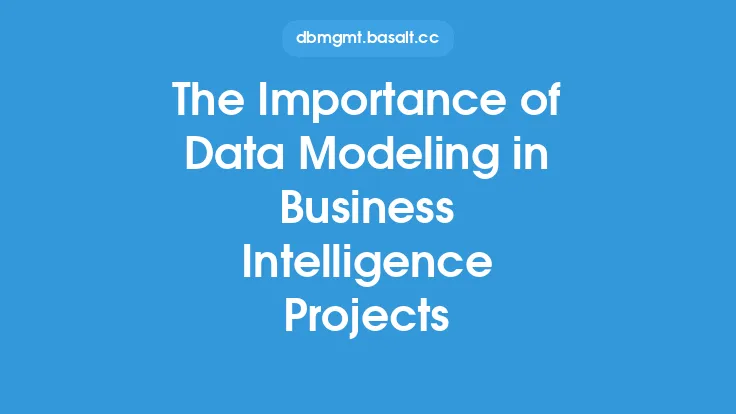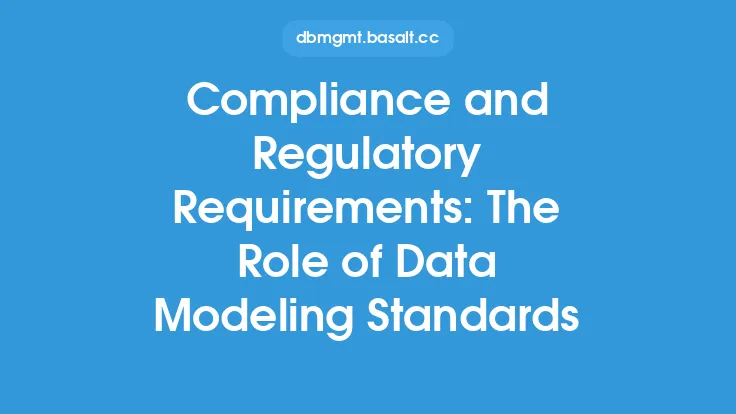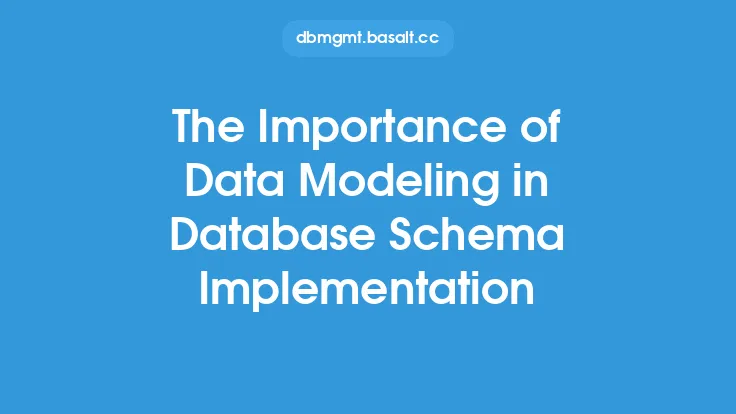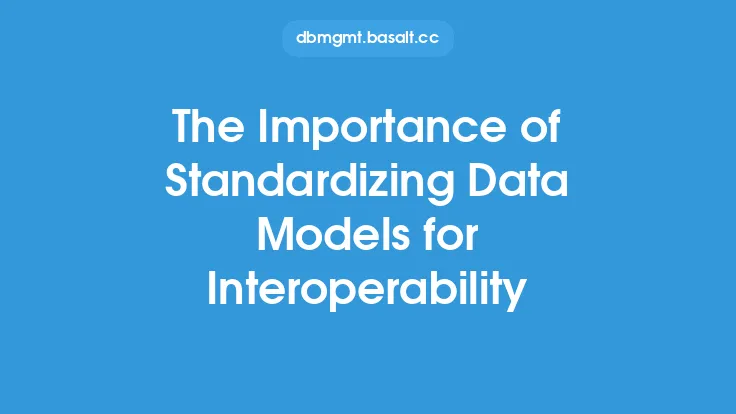In today's data-driven world, organizations are generating and collecting vast amounts of data from various sources, including social media, IoT devices, and customer interactions. This data can be structured, semi-structured, or unstructured, and it's being stored in different formats, such as relational databases, NoSQL databases, and data warehouses. As a result, managing and integrating this data has become a significant challenge for many organizations. One way to address this challenge is by creating a unified data architecture, which relies heavily on data modeling standards.
Introduction to Data Modeling Standards
Data modeling standards are a set of rules, guidelines, and best practices that ensure data models are consistent, accurate, and scalable. These standards help organizations to create a unified data architecture that can support various data management activities, such as data integration, data warehousing, and business intelligence. Data modeling standards provide a common language and framework for data modeling, which enables data architects, developers, and stakeholders to communicate effectively and work together seamlessly.
Benefits of Data Modeling Standards
The benefits of data modeling standards are numerous. Firstly, they help to improve data quality and integrity by ensuring that data models are consistent and accurate. This, in turn, enables organizations to make better decisions based on reliable data. Secondly, data modeling standards facilitate data integration and interoperability by providing a common framework for data exchange and sharing. This enables organizations to integrate data from different sources and systems, which can lead to new insights and business opportunities. Thirdly, data modeling standards help to reduce data redundancy and improve data reuse, which can lead to significant cost savings and improved data management efficiency.
Key Components of Data Modeling Standards
Data modeling standards typically consist of several key components, including data modeling notation, data modeling conventions, and data governance policies. Data modeling notation refers to the symbols, shapes, and syntax used to represent data entities, attributes, and relationships. Data modeling conventions refer to the rules and guidelines that govern the creation and maintenance of data models, such as naming conventions, data typing, and data validation. Data governance policies refer to the rules and guidelines that govern data management activities, such as data access, data security, and data retention.
Data Modeling Notation Standards
There are several data modeling notation standards, including Entity-Relationship Modeling (ERM), Object-Role Modeling (ORM), and Dimensional Modeling (DM). ERM is a widely used notation standard that represents data entities, attributes, and relationships using entities, attributes, and relationships. ORM is a notation standard that represents data entities, attributes, and relationships using objects, roles, and relationships. DM is a notation standard that represents data entities, attributes, and relationships using facts, dimensions, and hierarchies.
Data Modeling Conventions Standards
Data modeling conventions standards provide guidelines for creating and maintaining data models. These standards typically include naming conventions, data typing, and data validation rules. Naming conventions provide guidelines for naming data entities, attributes, and relationships, such as using singular nouns and avoiding abbreviations. Data typing provides guidelines for assigning data types to data attributes, such as using integer, string, or date. Data validation provides guidelines for validating data values, such as using check constraints or triggers.
Data Governance Policies Standards
Data governance policies standards provide guidelines for managing and governing data assets. These standards typically include data access, data security, and data retention policies. Data access policies provide guidelines for controlling access to data assets, such as using authentication, authorization, and encryption. Data security policies provide guidelines for protecting data assets from unauthorized access, use, or disclosure, such as using backups, archives, and disaster recovery. Data retention policies provide guidelines for managing data asset lifecycles, such as using data archiving, data purging, and data disposal.
Implementing Data Modeling Standards
Implementing data modeling standards requires a structured approach that involves several steps, including assessing current data management practices, defining data modeling standards, and training data architects and developers. Assessing current data management practices involves evaluating current data models, data governance policies, and data management processes. Defining data modeling standards involves creating a set of rules, guidelines, and best practices that govern data modeling activities. Training data architects and developers involves providing education and training on data modeling standards, notation, conventions, and governance policies.
Best Practices for Data Modeling Standards
There are several best practices for data modeling standards, including using industry-recognized notation standards, following data modeling conventions, and implementing data governance policies. Using industry-recognized notation standards, such as ERM or ORM, helps to ensure that data models are consistent and accurate. Following data modeling conventions, such as naming conventions and data typing, helps to ensure that data models are maintainable and scalable. Implementing data governance policies, such as data access and data security policies, helps to ensure that data assets are protected and managed effectively.
Conclusion
In conclusion, creating a unified data architecture relies heavily on data modeling standards. Data modeling standards provide a common language and framework for data modeling, which enables data architects, developers, and stakeholders to communicate effectively and work together seamlessly. By implementing data modeling standards, organizations can improve data quality and integrity, facilitate data integration and interoperability, and reduce data redundancy and improve data reuse. As data continues to play an increasingly important role in business decision-making, the importance of data modeling standards will only continue to grow.





